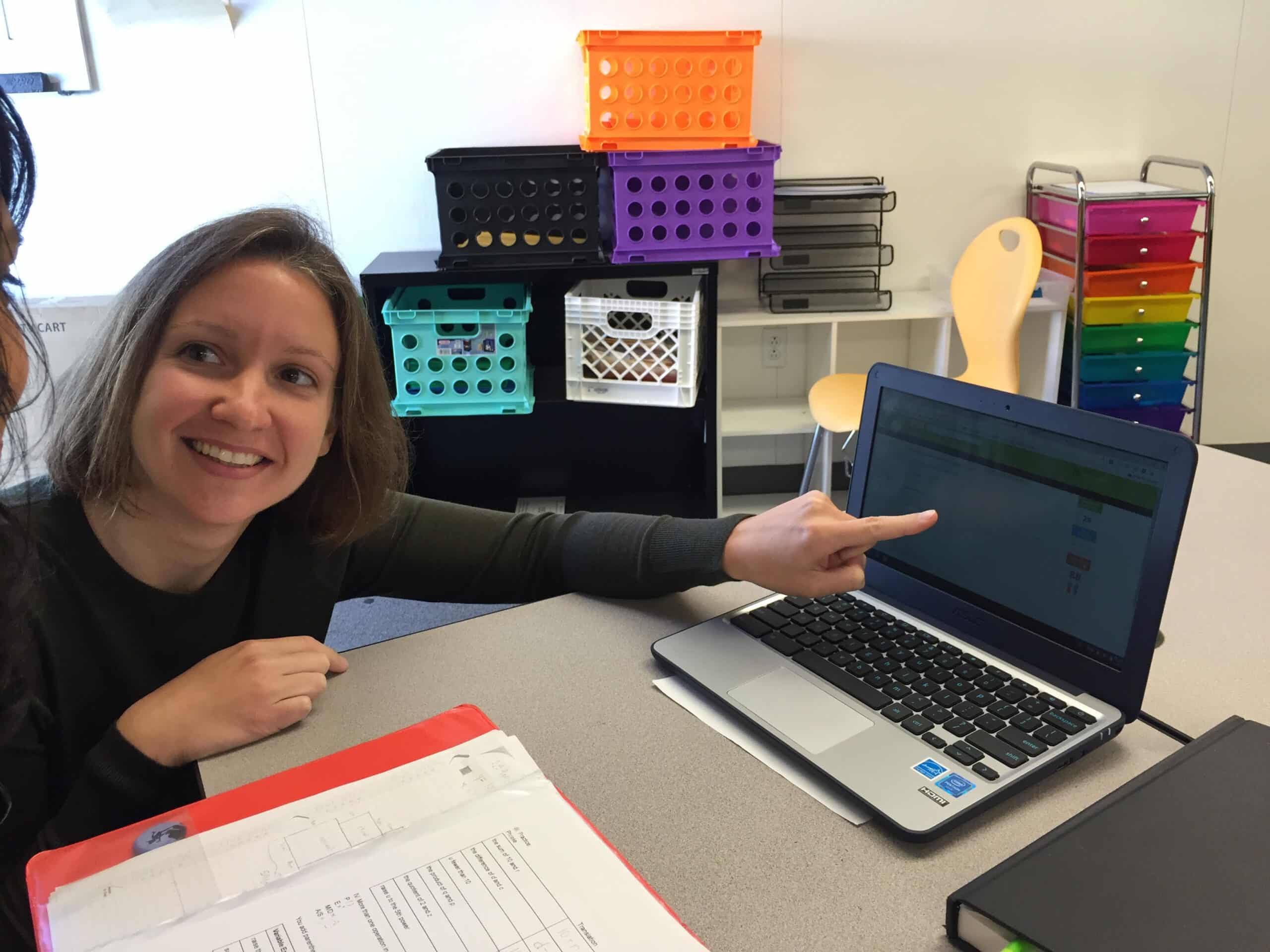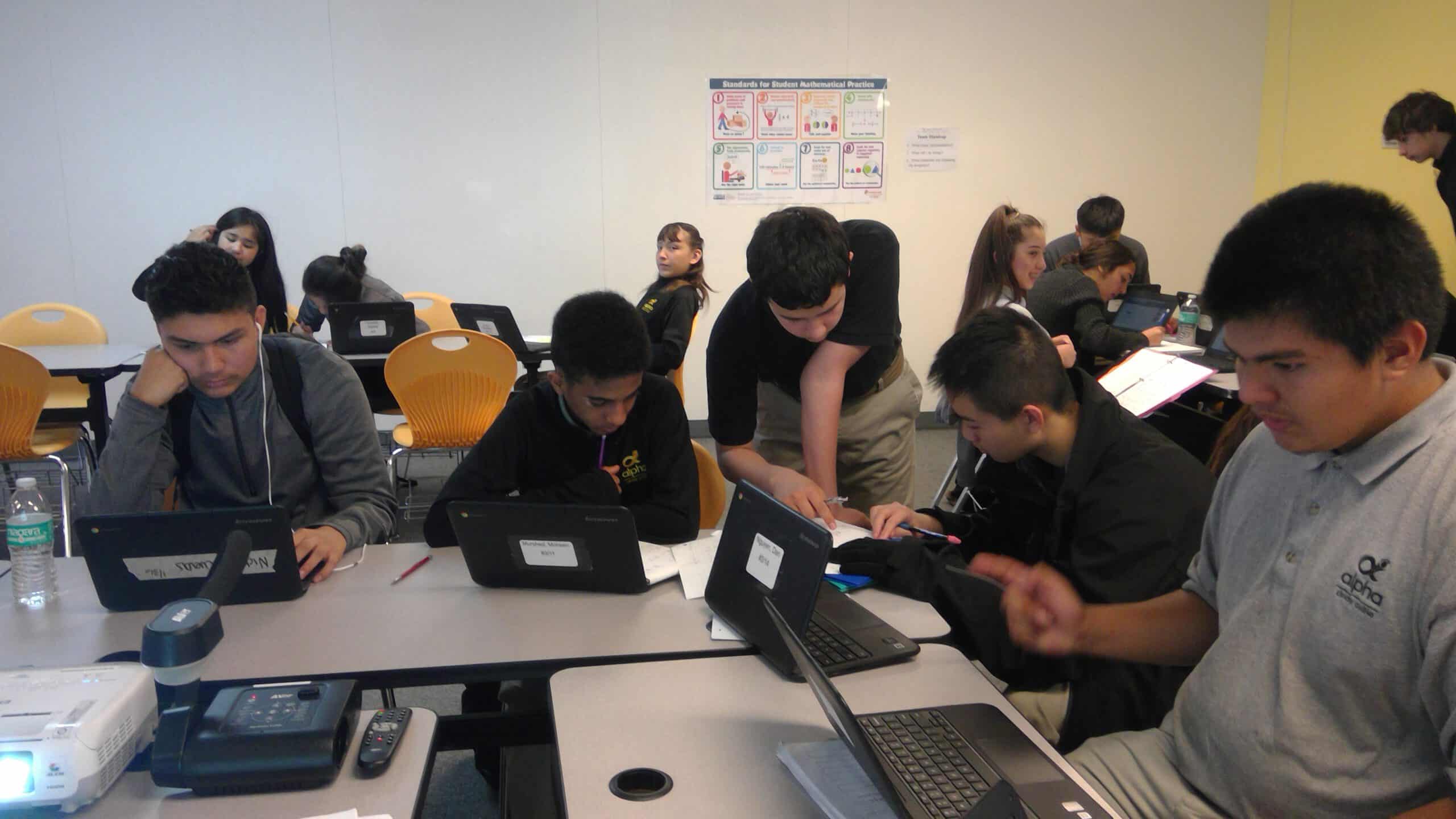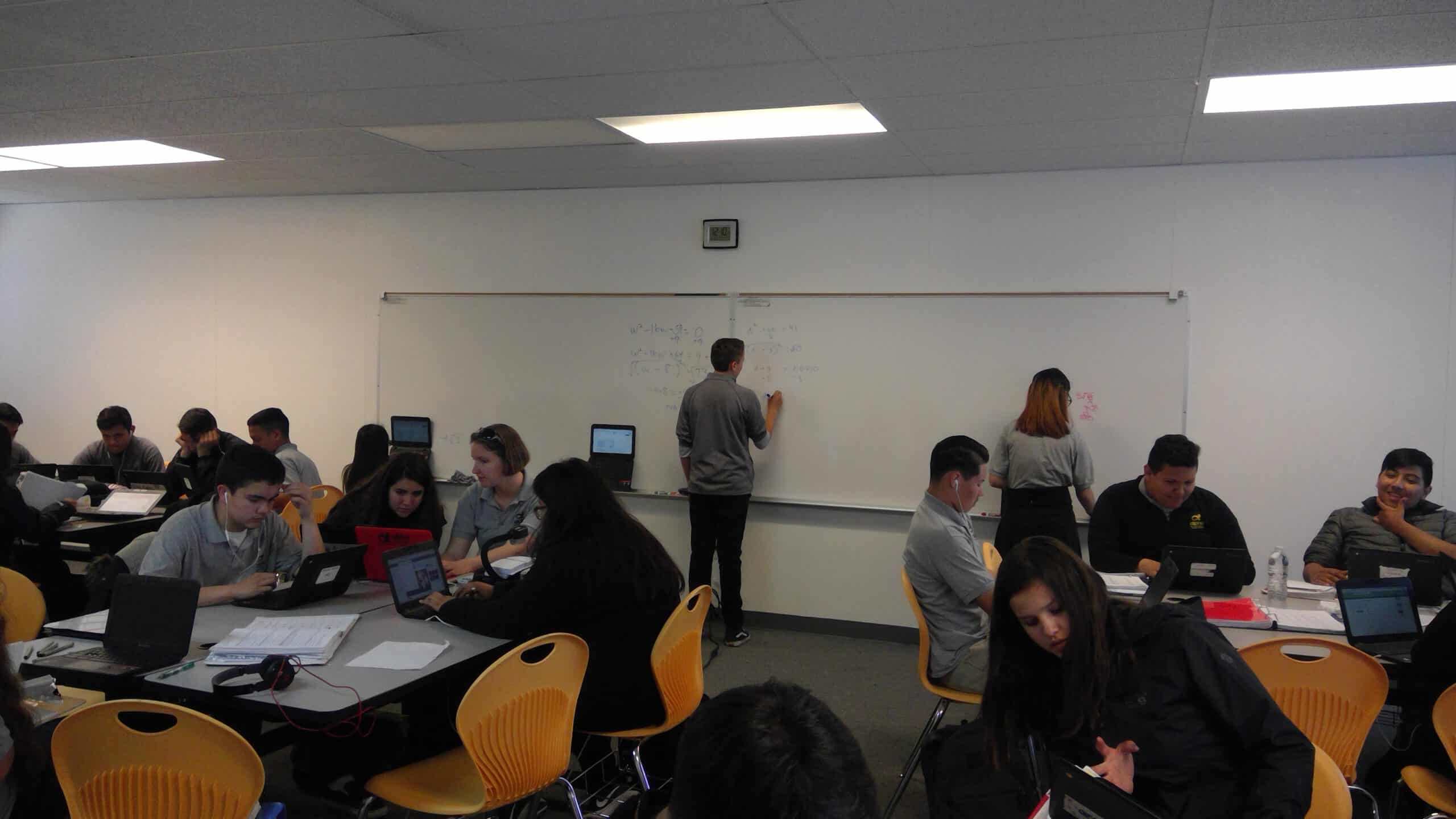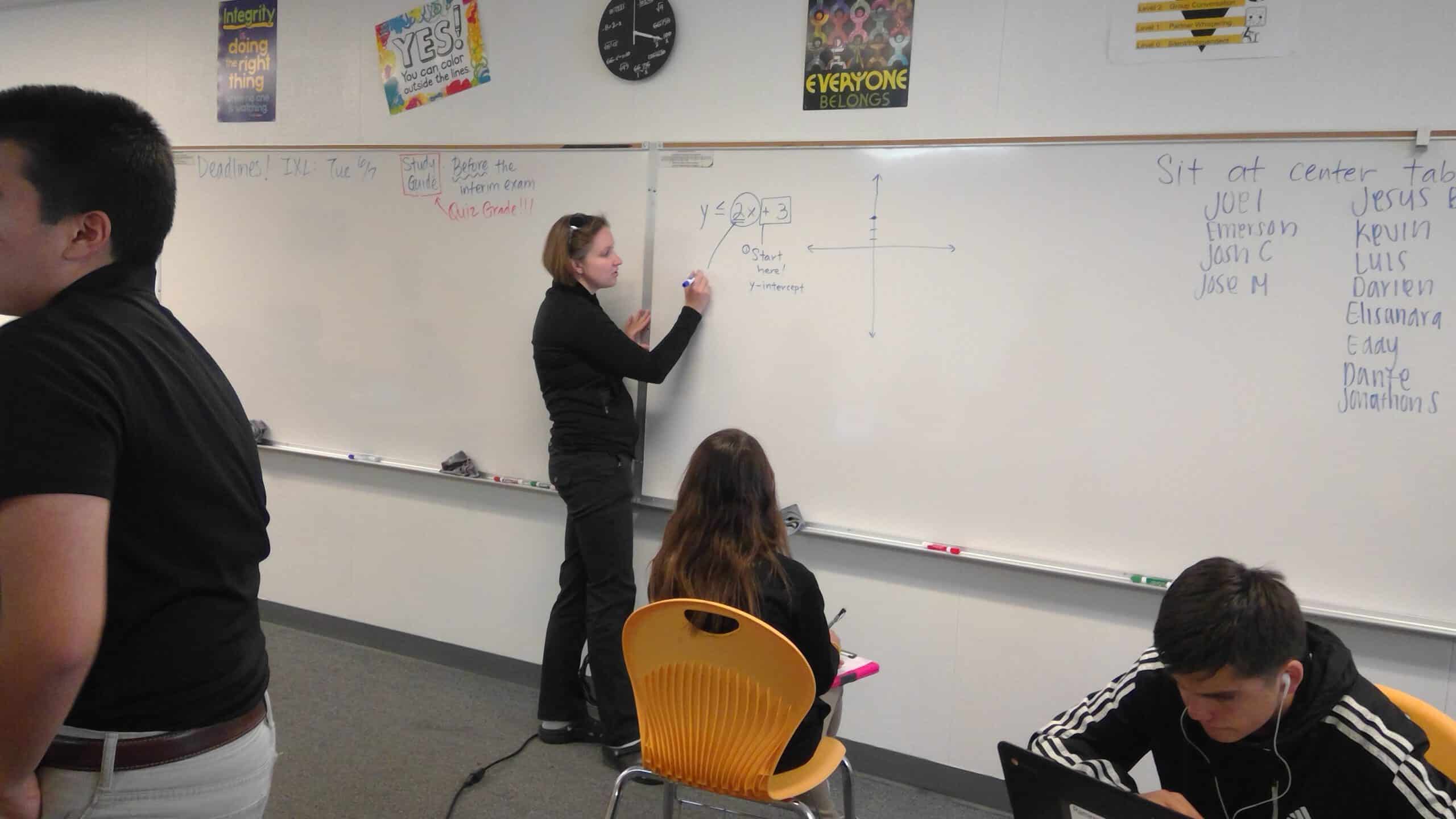I am concerned when I see a classroom that is locked in teacher-led instruction. Of course, some good can come from an interesting lecture, demonstration, or lesson. If it is part of a Station Rotation blended-learning model, then teacher-led instruction can be a good opportunity for teachers to enhance the content their students learn online. So, the problem is not that teacher-led instruction is necessarily bad. The problem is that delivering instruction limits teachers from having time to do something even better.

Kelly Kosuga felt this limitation firsthand. Kelly teaches 9th-grade Algebra I at Cindy Avitia High School, part of the Alpha Public Schools network in the San Francisco Bay Area. At the start of the 2015–16 school year, Kelly implemented a Station Rotation that consisted of three stations: Solo Station (independent work), Peer-to-Peer (pair work), and Guided Group (teacher-led instruction). Each student spent 25 minutes in each station before rotating—a classic Station Rotation model.
Kelly gave most of her attention to whichever students were in Guided Group at the time. As the semester progressed, however, she became increasingly frustrated that she could not clone herself so that there could be someone to monitor and help students at the other two stations. Plus, she didn’t like that the structure made it hard for her to differentiate instruction to a smaller size than three groups. She wanted to be able to meet with one or two students at a time. She felt stuck.

The next semester, Kelly made a bold move. She scrapped the teacher-led station. She replaced stations with work sprints, in which students worked independently or with peers on lessons that they could control themselves, without her delivering the instruction at all. She introduced several structures, including a “Checklist of Habits” that helped students self-diagnose what to do when stalled; a paper-based tracker that they kept on their desks to display their online progress; bi-weekly quizzes to check for adequate pacing; and daily activities to encourage teaming.

The stunning result was that Kelly shattered the constraints on her own time. In fact, as she taught good habits, released control, and encouraged teaming, she gained a windfall of time. And she put it to good use. Kelly began to use work sprints as an occasion to meet with students to give them the personal feedback that they needed and that she had wanted to give before, if only she had had the time. When more than one student had the same misconception or wanted to go deeper, she pulled together a few students for a mini-lesson. When students had a unique problem, she met with them one-on-one. She even found a way to do speed conferencing, in which she did a face-to-face check in with each of her 40 students within one class period. By the end of the semester, Kelly was spending nearly the entire block giving feedback; that became Kelly’s primary function during class.

Kelly’s story and two others like it are described in the new Christensen Institute publication: “How to create higher performing, happier classrooms in 7 moves: A playbook for teachers.” Mallory Dwinal, David Richards, and Jennifer Wu initiated the study and led the pilot work, and four teachers implemented the pilots: Kelly Kosuga, Rebecca Weissman, Linda Rogers, and Orly Friedman (along with her Khan Lab School team).
These teachers found that giving students feedback was the most powerful thing that they could do to help them. Their findings are not surprising. High-performing managers in many of the most successful, respected organizations obsess about giving feedback. In fact, at Google, the best managers score significantly higher than the worst on the extent to which their team members agree with the sentence: “My manager gives me actionable feedback that improves my performance.” The Deloitte consulting firm recently instituted “radically frequent check ins,” at least once a week, but more if possible. The company’s belief: “If you want people to talk about how to do their best work in the near future, they need to talk often. Very frequent check ins are a team leader’s killer app.” Feedback can take the form of one-on-one meetings, small-group sessions with hand-picked groups that need a particular feedback message, and written notes and comments—all done with the intent to improve performance, not reward or punish.
How did Kelly’s students feel about her switch from giving instruction to giving feedback? In an end-of-semester survey, their appreciation for their teacher overflowed. They said:
- “She motivates me with extreme happiness.”
- “She always makes me feel like I can do anything.”
- “She is very supportive.”
- “She celebrates with me when I tell her something good has happened and I feel like I can tell her anything when something is wrong.”
- “She asks me if I am okay all the time.”
- “Me da poder.”
- “She shows success to us by being proud and bragging with kindness.”
Observers noticed big changes in Kelly’s classroom. Kelly had released control to her students by easing from a Station Rotation to a Flex model that nurtured agency. She had empowered peers to work together through teaming to support each other during work sprints. The structure had given her a level of comfort about not micromanaging or exerting top-down control. Within a couple of months, students knew what they needed to do to be successful and had the power to do it; the classroom was humming.
For teachers, releasing control to students and freeing up one’s time from delivering group instruction is a big change. It requires both a mental shift and a physical effort to create a new set of structures and routines. Once in place, however, the change creates a windfall of time to personalize relationships and connect with students in ways that are more likely to impact their lives.
For more, see:



